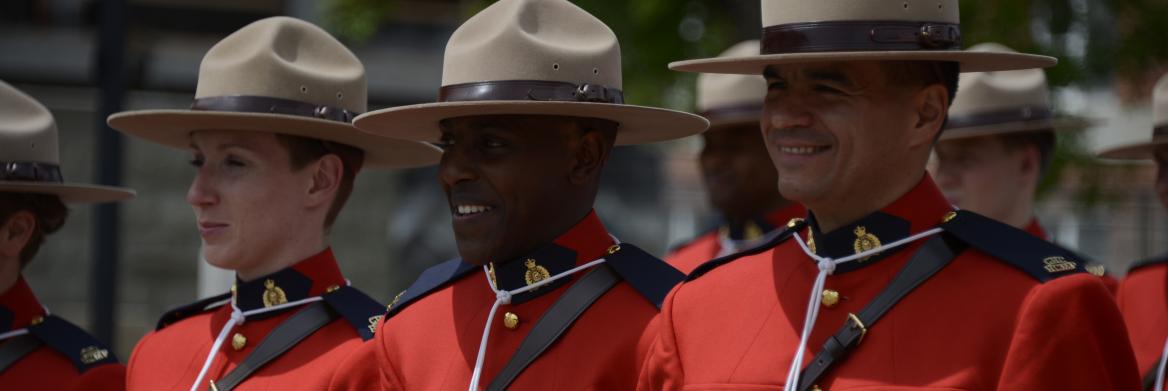Cst. Amy Rowat credits the old detective shows she watched on television with her dad for sparking her interest in policing as a child. But it took 10 years of studying and working in another field altogether for Rowat to realize that her childhood curiosity and passion for policing were still alive.
"Throughout the years, I was still always interested in policing," says Rowat. "Then I thought I was getting older so I should do it now."
With the timing right, Rowat started building her police resumé, which involved getting physically and mentally prepared for a new career.
She got a diploma in police foundations, began volunteering, started working out and underwent surgery to correct a problem with her eye. Rowat says it took her four years to switch careers, which included two years to go through the RCMP's application process.
Representing the community
Like Rowat, many new recruits aren't applying for the RCMP straight out of high school.
About 38 per cent of new recruits have a post-secondary education.
At 32, Rowat is just a few years older than the median age of her troopmates at Depot (the RCMP's training academy), which wasn't always the case. The age of cadets has risen over the years.
"When I went through Depot in 1987, I was 24 years old," says C/Supt. Lindsey Brine, the Director General, Recruiting Modernization and Human Resource Transformation. "I was the third oldest person in my troop. Now the median age of recruits is 27."
The RCMP is also changing its recruiting objectives to better reflect the diverse nature of Canada's population.
With recruitment benchmarks set in the different employment equity groups — women, aboriginal and visible minorities — the RCMP is aiming to better reflect the demographics of Canada and today's labour market.
In 2013, the RCMP increased its recruiting objective for women, aiming for them to comprise 35 per cent of all recruits enrolled at Depot. It reached 33 per cent, an increase of nine per cent from 10 years previous.
For 2015, a special benchmark has been set: 50 per cent of all cadets sent to Depot will be women. The goal is to have women represent 30 per cent of all members in the force by the year 2025.
The number of visible minorities enrolled at Depot has also steadily increased over the past 10 years. It's now at 18 per cent, up from seven per cent in 2004–2005.
"We're seeing a different force," says Brine. "We're working very hard to recruit more visible minorities, aboriginals and females, but we need to do better and we need to attract more people from diverse groups."
Targeted recruitment
Recruitment officers are now reaching out to different communities to make that possible.
"Some of the things that we're doing is to offer PARE [RCMP fitness test] assistance to new female applicants, run targeted advertising for employment equity groups and we also ask all members in the field to reach out to those groups," says Sgt. Marlene Bzdel of national recruiting.
In Alberta, the recruiting unit holds career presentations geared toward women, aboriginals and visible minorities. The unit works with women to get fit, not just for work but for life, and it runs an aboriginal high school mentorship program to get aboriginal youth thinking about a career with the RCMP.
These initiatives also help get the message out that the RCMP is hiring, says Cpl. Barbara Hemsley, a recruitment officer in Alberta.
"We're always looking for qualified applicants from a wide range of backgrounds," says Hemsley. "Having a more diverse police service will provide us with a balanced approach to solving problems and better representing the communities that we serve."
Rowat, who now works at the Evansburg detachment in Alberta, says becoming a police officer wasn't a decision she took lightly.
"I think it's something you need to be passionate about, and I had the time to figure that out and make sure I was prepared," she says.
